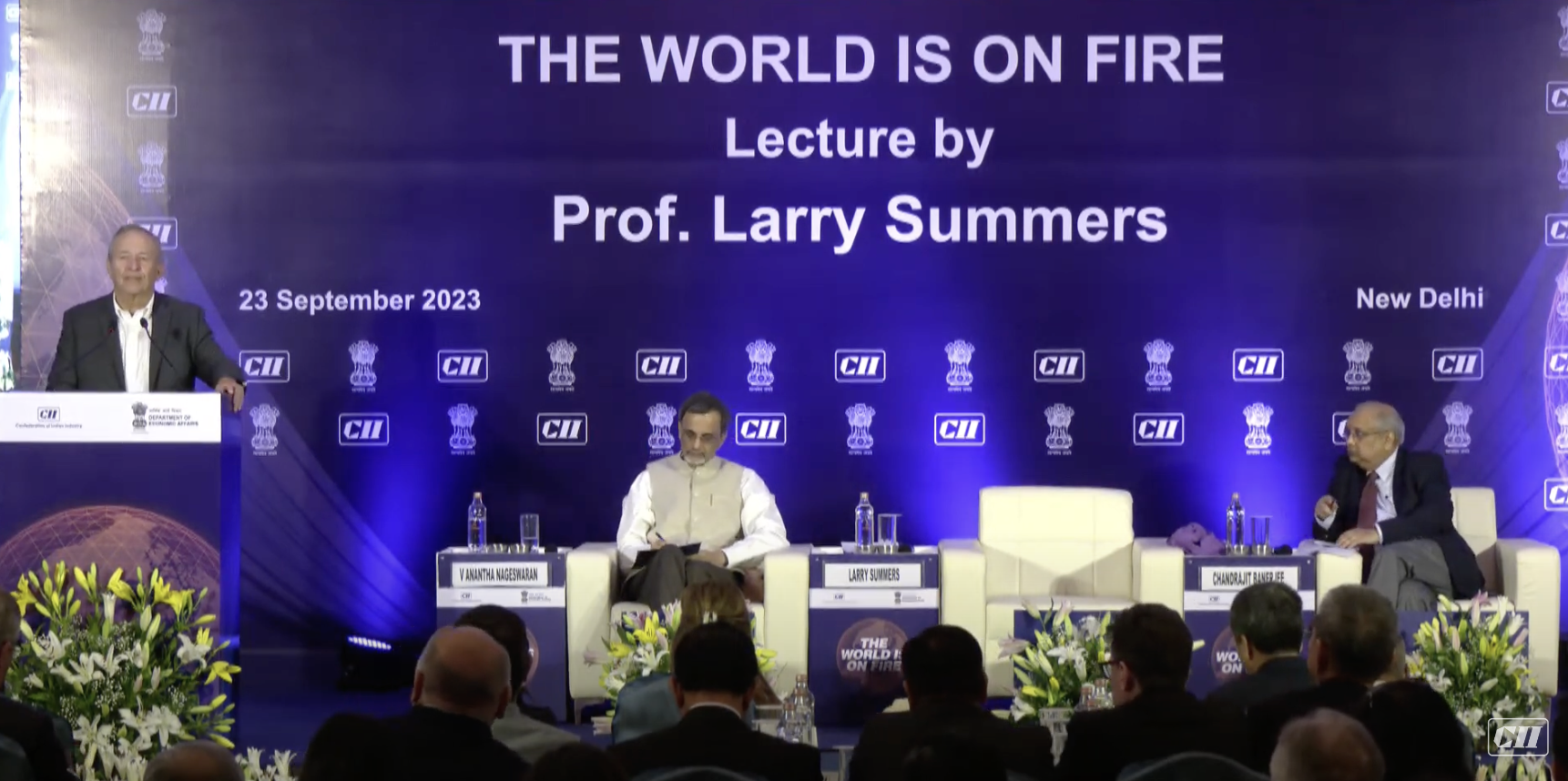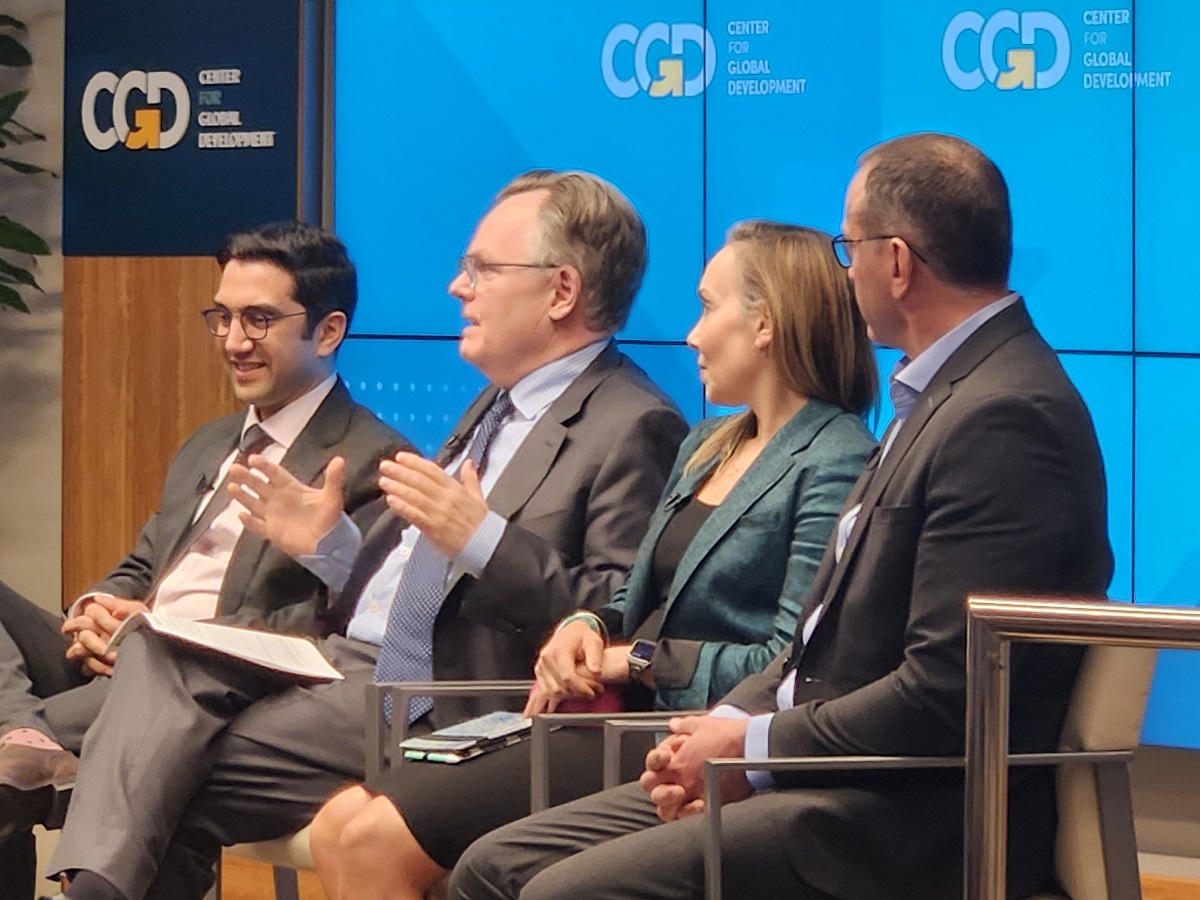Recommended
Next week, finance ministers and other officials from around the world will descend on Marrakech for the World Bank and IMF annual meetings. There's more attention than ever on the meetings this year, with an ambitious World Bank reform effort in the works, a range of pressing global challenges to solve, and major disagreements over how to address them.
Read on for a range of quick reactions from CGD's experts on what will happen next week, and what should happen—and how we get from one to the other.
You can find also more info here on the three events CGD is hosting alongside the annual meetings (with livestreams or recordings for those not joining us in Morocco).
Heading into the annual meetings, there is broad agreement that we are facing a five-alarm fire—but the best response we seem able to muster is a garden hose.
What should happen in Marrakesh is agreement on a coherent reform package to support a robust World Bank response to the global challenges agenda for both IBRD and IDA clients. Adoption of this agenda should include a clear framework on the how, both in terms of execution and financing, such as agreements to lay the groundwork for a general capital increase and aim for an exceptional IDA replenishment in 2024.
What will happen is some modest steps on reform, as proposed in the World Bank’s updated Evolution Roadmap, including agreement to add “livable planet” to the Bank’s current twin goals (eliminating extreme poverty and boosting shared prosperity) and adoption of eight global challenges (climate/adaptation, fragility and conflict, pandemic prevention, energy access, food security, water security, digitalization and protecting biodiversity and nature). This new agenda will be supported by a set of Global Challenges Programs, a somewhat vaguely defined platform that will “leverage the One World Bank approach and combine public and private capital and solutions, as well as co-financing from other MDBs to address targeted global challenges.” The “livable planet” proposal is an elegant solution to the shareholder debate over how explicitly the World Bank should embrace climate change but leaves open the question of what exactly this means for client engagement and resource allocations—especially for IDA countries.
Sources of funding needed to make this mandate expansion meaningful will remain elusive. A few countries may pledge guarantees or hybrid capital, but absent US support, there will be no significant movement on a general capital increase. Shareholders will call for an “ambitious” IDA replenishment, consistent with the sentiment expressed at the G20, and a few countries may respond modestly to the World Bank fundraising ask for the IDA crisis response window. The risk is that these half measures will exacerbate the trust deficit between donors and borrowers that has emerged in the wake of the global pandemic response and hyper-focus on Ukraine.
The experience with the Capital Adequacy Framework (CAF) report, which put forward comprehensive recommendations for stretching multilateral development bank (MDB) capital without endangering institutional ratings, shows that reform momentum can gain steam if shareholders are resolute. All the major MDBs are now actively pursuing the CAF agenda, and the gains in lending capacity will be large. The IBRD and ADB are contemplating reforms that would increase their lending capacity by $150 billion and $100 billion respectively over 10 years. MDBs are taking up measures that some initially rejected as impossible—giving value to MDB callable capital, increasing leverage, issuing non-voting hybrid capital, and implementing large-scale portfolio risk transfers to free up capital for more lending. And the US and others are stepping up with efficient guarantee funds that will add significant headroom if more shareholders contribute.
But to meet this moment, as shown in volume 1 of the report to the G20 of the Independent Experts Group (to be followed by volume 2 next week), more efficient use of capital must be combined with more shareholder capital and transformed—not tweaked—MDB business and financial models. Given a reform agenda of this depth, breadth, and political complexity, there will be a tendency to try to sequence and stretch reforms over time. That would be a mistake: the reforms and the likelihood of their success are interdependent. The language crafted in the statement of the G20 finance ministers and central bank governors will be critical, especially on the question of capital increases. No one suggests that most of these institutions are ready now for decisions on capital. But it is entirely possible and sensible for all the major institutions to begin reviews of available capital and projected needs, using common definitions and metrics. That will enable shareholders to make well-informed capital decisions—within a timeframe that is relevant for the planet.
– Nancy Lee and Masood Ahmed
As Karen points out, for all that the World Bank Evolution Roadmap has some good bits, it doesn’t convey much in the way of radical change—especially around vestigial processes and bureaucracy. And as Nancy and Masood add, there’s little sign yet that the institution will be given the resources required to propel it into a new era of engagement on either poverty reduction or guaranteeing a livable planet. So, what I’ll be watching for at the annual meetings is how much there will be an honest discussion of how far there is to go, or if we’ll see an effort at diversion and illusion instead. If you hear “it’s a different hat this time, and the magicians at the Private Investment Lab can pull a trillion-dollar rabbit out of it;” or “no, really, there’s no tradeoff between finance for mitigation and finance for poverty reduction, with this simple trick the same money can do both,” you can be pretty sure the spoon-benders have won.
While much of the annual meetings will focus on the MDBs, there are movements afoot for some reform of the IMF. Discussions are likely to focus on increasing the lending capital of the IMF—countries’ quotas, in IMF lingo. In his talk at CGD, the US Under Secretary of the Treasury, Jay Shambaugh, argued that there be an “equi-proportional” increase in quotas—that is, everyone kick-in in proportion to their current shareholding. Since quotas determine voting shares in IMF decisions, this means that countries’ voting shares wouldn’t change. In particular, the US would maintain its 16.5 percent voting share, effectively giving it veto power over major decisions at the IMF, which require 85 percent approval.
While middle-income countries might be sympathetic to enlarging the size of the IMF with larger quotas, they would also like proportionately more votes. So they would like to increase quotas but not in equal proportions. The BRICs countries argue that their economies have grown faster than the rest of the world, so they should have a bigger voting share. The annual meetings will be just the beginning of this discussion, which will likely take months. But it will be interesting to see how the shareholders stake out their positions. Especially as any increase in the quota share for MICs will likely come out of European votes—the US will never agree to go below 15 percent! There will also likely be discussions on the IMF’s role in climate change and possible reform of IMF lending instruments. No big conclusions expected, just the start of a longer consideration.
What’s on offer for the poorest?
Much of the spotlight in Marrakech will be on the IBRD and the World Bank Evolution Roadmap, which largely focuses its engagement with middle income countries. But there’s a crisis brewing across low-income countries, which have been battered by a series of exogenous shocks—from the global pandemic to food insecurity—that are derailing many of the past decade’s development gains. IDA—the arm of the Bank that provides the largest source of concessional and grant funding for the world’s poorest—has stretched itself to meet record demand. In turn, it is seeking a bridge from donors to shore up its finances through the current replenishment cycle.
Unfortunately, despite significant positive rhetoric from donors around support for IDA, it is far from meeting its $4 billion fundraising target. So far, only the US has come forward with the intent to contribute $1 billion—but rather than inspiring others to follow-suit, many other donors are rightly skeptical that the US administration will be able to muster Congress to provide the funding. This lackluster fundraising exercise doesn’t bode well for the next replenishment, which commences in 2024. Marrakech is a moment for countries that rely on IDA to build up some constructive outrage around the lack of action, and a wake-up call for the World Bank to turbocharge its fundraising efforts.
I’ll have my eye on two issues next week: evidence and diversity.
At the World Bank, “knowledge and learning” are typically generated through donor-funded impact evaluations, which means which programs are evaluated is determined by volatile funding flows rather than a holistic approach—leaving the institution at the mercy of a fragmented evidence base when making decisions. This means that many of the Bank’s large lending operations have limited engagement with what we already know about effective interventions in that policy space or geographic region, and even fewer have impact evaluations that meaningfully influence decisions on scaling-up programs.
For one, I am encouraged by the central role played by the so-called knowledge compact in the Evolution Roadmap, which has been officially released in time for the annual meetings in Marrakech. But to become a central and sustainable part of decision-making at the World Bank, a systematic learning agenda must go well beyond impact evaluations. The global challenge programs introduced as part of the knowledge compact would be a great opportunity to pilot the development and adoption of systematic learning agendas at the portfolio level. These agendas would include the use of all available evidence at the design stage of all lending operations, and should tie in routine program assessments and learning from process. In other words, the knowledge compact is an appealing idea, but to be successful it must be developed and embedded across the institution, and owned and led by World Bank operations.
We should also be paying attention to the international financial institutions (IFIs) and how well they walk the talk on diversity, equity, and inclusion. Diversity and inclusion improve the quality, relevance, and credibility of development policy. Both the World Bank and IMF have diversity, equity, and inclusion statements that recognize that gender equality is an essential part of economic development. Yet, of the 9 major IFIs, only 2 have ever been led by a woman, with no representation of women of color. Further, two IFIs have no women at all among their senior leaders. By my count, of over 150 senior management positions across the major IFIs, only 12 are filled by women from a low- or low-middle income country.
Here at CGD, we are developing a platform studying the trends in human resource (HR) data on representation at IFIs, but also centering the lived experiences of the women who work there across all ranks. At our Birdsall House Conference next month, we will present results from an analysis of HR data on the successes and bottlenecks in achieving greater representation in management at IFIs. And we will learn from the experiences from a number of women who are currently working at an IFI, from senior management to technical staff. You can listen to a new CGD podcast on this issue, and watch this space for more details on registering for the conference.
Disclaimer
CGD blog posts reflect the views of the authors, drawing on prior research and experience in their areas of expertise. CGD is a nonpartisan, independent organization and does not take institutional positions.







